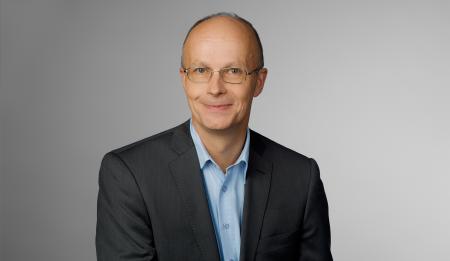
IMI Programme Office: Why was a project like yours needed in the first place?
Matthias Gottwald: Education and training are important aspects of high-quality science, and research and development. Pharma companies depend on having well-trained people in all steps of the research and development life cycle. As the landscape and the technologies are constantly changing, it is important that the training providers also adapt quickly and that could only be achieved via a consortium approach.
IMI Programme Office: As coordinators of this project, which project achievements are you most proud of?
Michael Wolzt: I think most of our resources have gone into establishing a free-of-charge course catalogue which covers everything that is taught in pharmaceutical medicine and sciences across Europe and neighbouring countries. At the moment we list more than 8 000 different courses that range from simple one-day teachings to sophisticated PhD programmes that can be done remotely or face to face. We list course costs, content, requirements and links to the course websites. The course providers can administer their courses so that the course content remains up to date.
Matthias Gottwald: I also think that the PhD workshop we developed is very successful. The aim of this week-long workshop is to provide young researchers with a holistic understanding of medicines development and an insight into the pharmaceutical industry. Even though a relatively limited number of students participate annually, this is creating a growing alumni network of industry-aware students independent of the fact if they later end up working in the industry or staying in academia. Even though our project finished, this course is still available in the context of a new Horizon 2020 project.
Michael Wolzt: We have also created a platform for life-long learning, which covers topics in all educational areas and we were able to bring together employers, course providers, as well as students to tell us what they want and what they need… For example, if an employer tries to find a specialist in a new field, like stem cells, they can state the requirements needed and students can subsequently adjust their training according to those needs. It gives people great access to job opportunities and, on the other hand, it lets the academia plan more effectively the trainings which are needed in the industry.
IMI Programme Office: How did the academic community benefit from participating in this project?
Michael Wolzt: Thanks to this project, the academic community had a great opportunity to get out of their ivory towers and see what the industry actually does. We are sometimes obsessed with the notion that only pure science has a place in academia, and that industry develops everything for purely commercial purposes. Through this project we learned that we have a lot in common and that we can work together quite effectively.
IMI Programme Office: And how did the industry benefit?
Matthias Gottwald: The biggest benefit for the industry was having the course content jointly developed and delivered by experts from both industry and academia, ensuring that the needs of the industry are reflected in the training programmes, and better preparing students so they can then work in the industry or as partners of industry on the academic side.
IMI Programme Office: Would it have been possible to achieve all this without IMI?
Michael Wolzt: The public-private collaboration brought by IMI was instrumental to the different success stories in this project. Without IMI as an umbrella, the different industry partners wouldn’t work together without seeing themselves as competitors - it wouldn’t have been possible to bring them around the same table. In that sense, the academia might have served as a buffer zone for the different industry partners to collaborate. The same holds true for industry – they were a mediator which enabled different universities to collaborate. Universities are also in competition about money, about grants, about everything, and this IMI project brought them together. So I’d say that this collaboration paid off for both sides.
Matthias Gottwald: I also think that it wouldn’t have been possible to have an initiative of this scale and format without IMI. We have seen and we constantly see very good bilateral collaborations between public and private organisations but to have this multi-stakeholder approach, I think it is only possible via a neutral platform like IMI.
Michael Wolzt: It should also be mentioned that the geographical reach across Europe was facilitated by this collaboration. The industry partners wouldn’t have had the means to go across Europe with the same intensity. The same goes for universities which are usually nationally oriented because they get funding from their national governments. So this is also one of the major advantages of such a neutral consortium.
